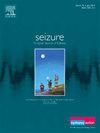唾液治疗药物监测对新型抗癫痫药物的临床价值。
IF 2.7
3区 医学
Q2 CLINICAL NEUROLOGY
引用次数: 0
摘要
唾液是治疗性药物监测的一个很有前途的选择,自20世纪70年代以来的研究表明,血浆和唾液水平与早期抗癫痫药物之间存在良好的相关性,尽管新一代药物的数据有限。目的:评价唾液作为新型抗癫痫药物(ASM)常规治疗药物监测(TDM)中血药浓度的微创替代标志物的可靠性和预测能力。方法:我们采集患者在给药后至少6小时的稳定状态下的血液样本,与未刺激的唾液样本配对。我们评估了血浆和唾液药物水平之间的相关性,以及从唾液水平推断血浆值的阳性和阴性预测值。非常低的唾液水平被定义为低于血浆参考下限的一半。结果:纳入294例成人患者(53%为男性),平均年龄40岁(SD: 16), 589例配对唾液-血浆样本被量化。唾液与血浆的相关性最高的是唑尼沙胺(R2: 0.92)、perampanel (R2: 0.91)、布伐西坦(R2: 0.87),其次是托吡酯、拉莫三嗪、拉可沙胺(R2: 0.76-0.68)和鲁非那胺、左乙拉西坦、普瑞巴林(R2: 0.63-0.55)。奥卡西平的活性单羟基衍生物没有发现显著的相关性。尽管有很好的相关系数,但唾液和血浆水平之间的相关性通常是松散的,导致给定唾液水平的血浆水平的预测范围很广。尽管如此,非常低的唾液水平在预测低血浆水平方面表现出很强的特异性,准确率为87%至100%,当唾液水平低于定量限制时,所有相应的血浆水平都低于参考范围。结论:这项大型的新ASM配对血浆-唾液收集允许精确的唾液在癫痫治疗中的潜在用途,特别是对于常用的ASM,如拉莫三嗪和左乙拉西坦。尽管它们的相关性很好,但从唾液样本中推断血浆水平仍然是一个不精确的近似值,这使得它不足以进行精细的剂量调整。然而,极低的唾液水平对低血浆水平有明显的判别能力。未受刺激的唾液代表了一种方便的非侵入性血浆替代品,可以很容易地识别依从性问题或主要的药物-药物相互作用。本文章由计算机程序翻译,如有差异,请以英文原文为准。
Clinical value of saliva therapeutic drug monitoring of newer antiseizure medications
Introduction
Saliva is a promising option for therapeutic drug monitoring, with studies since the 1970s indicating a good correlation between plasma and saliva levels for early anti-seizure medications, although limited data exist for newer generation drugs.
Objectives
To evaluate the reliability and predictive power of saliva as a minimally invasive surrogate marker of plasma concentration for the routine therapeutic drug monitoring (TDM) of newer anti-seizure medications (ASM).
Methods
We collected blood samples at steady state in patients at least 6 h post-dose, paired with unstimulated saliva samples. We evaluated the correlation between plasma and saliva drug levels and the positive and negative predictive value for plasma values extrapolation from saliva levels. A very low saliva level was defined as below half the plasma lower reference limit.
Results
294 adult patients (53 % male) with a mean age of 40 (SD: 16) were enrolled and 589 paired saliva-plasma samples were quantified. The highest significant correlations between saliva and plasma were observed for zonisamide (R2: 0.92) perampanel (0.91), brivaracetam (0.87), followed by topiramate, lamotrigine, lacosamide (0.76–0.68), and rufinamide, levetiracetam, pregabalin (0.63–0.55). No significant correlation was found for the active mono-hydroxy derivative of oxcarbazepine. Despite a good correlation coefficient, the correlations between saliva and plasma levels were generally loose, resulting in a broad predicted range of plasma levels for a given saliva level. Nonetheless, very low saliva levels exhibited strong specificity in predicting low plasma levels, with 87 % to 100 % accuracy, and when saliva levels fell below the limit of quantification, all corresponding plasma levels were below reference ranges.
Conclusions
This large newer ASM paired plasma-saliva collection allows to precise the potential use of saliva in the management of epilepsy, especially for commonly used ASM such as lamotrigine and levetiracetam. Although they correlate well, extrapolating plasma levels from saliva samples is still an imprecise approximation, making it inadequate for fine dosage adjustments. Yet, a very low saliva level has an appreciable discriminative ability for low plasma level. Unstimulated saliva represents a convenient non-invasive alternative to plasma, to readily identify compliance issues or major drug-drug interactions.
求助全文
通过发布文献求助,成功后即可免费获取论文全文。
去求助
来源期刊

Seizure-European Journal of Epilepsy
医学-临床神经学
CiteScore
5.60
自引率
6.70%
发文量
231
审稿时长
34 days
期刊介绍:
Seizure - European Journal of Epilepsy is an international journal owned by Epilepsy Action (the largest member led epilepsy organisation in the UK). It provides a forum for papers on all topics related to epilepsy and seizure disorders.
 求助内容:
求助内容: 应助结果提醒方式:
应助结果提醒方式:


